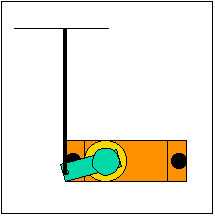5. References
[1] S. J. Lederman and R. L. Klatzky, "Sensing and displaying spatially
distributed fingertip forces in haptic interfaces for teleoperator and
virtual environment systems," Presence, vol. 8, pp. 86-103, 1999.
[2] C. J. Hasser and M. W. Daniels, "Tactile feedback with adaptive
controller for a force-reflecting haptic display. 1. Design," presented
at Proceedings of the 1996 Fifteenth Southern Biomedical Engineering Conference,
New York, NY, USA, 1996.
[3] P. S. Wellman, W. J. Peine, G. Favalora, and R. D. Howe, "Mechanical
design and control of a high-bandwidth shape memory alloy tactile display,"
presented at Experimental Robotics V. The Fifth International Symposium,
Berlin, Germany, 1998.
[4] G. Moy, C. Wagner, and R. S. Fearing, "A compliant tactile display
for teletaction," presented at Proceedings 2000 ICRA. IEEE International
Conference on Robotics and Automation, Piscataway, NJ, USA, 2000.
[5] D. G. Caldwell, N. Tsagarakis, and C. Giesler, "An integrated tactile/shear
feedback array for stimulation of finger mechanoreceptor," presented at
Proceedings of International Conference on Robotics and Automation, Piscataway,
NJ, USA, 1999.
[6] M. B. Cohn, M. Lam, and R. S. Fearing, "Tactile feedback for teleoperation,"
Proceedings of the SPIE - The International Society for Optical Engineering,
vol. 1833, pp. 240-54, 1993.
[7] D. T. V. Pawluk, C. P. van Buskirk, J. H. Killebrew, S. S. Hsiao,
and K. O. Johnson, "Control and pattern specification for a high density
tactile array," presented at Proceedings of the ASME Dynamic Systems and
Control Division, New York, NY, USA, 1998.
[8] H. Fischer, B. Neisius, and R. Trapp, "Tactile feedback for endoscopic
surgery," presented at Interactive Technology and the New Paradigm for
Healthcare. Medicine meets Virtual Reality III Proceedings, Amsterdam,
Netherlands, 1995.
[9] R. S. Fearing, G. Moy, and E. Tan, “Some Basic Issues in Teletaction,”
IEEE Int. Conf. Rob. And Auto., vol 4., pp. 3093-9, Albuquerque, NM, 20-25
April 1997
|













